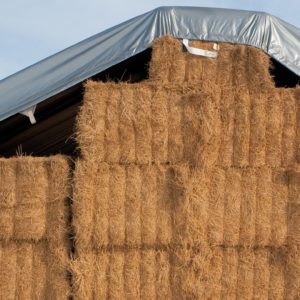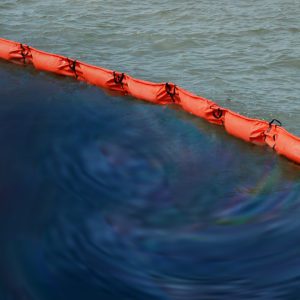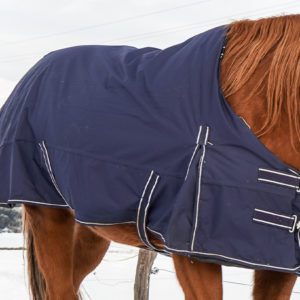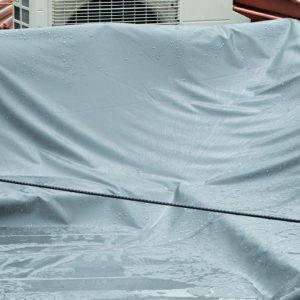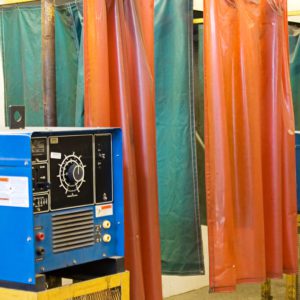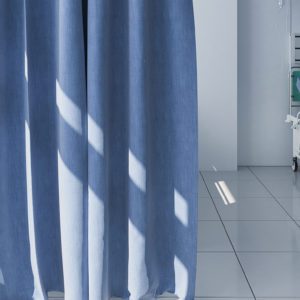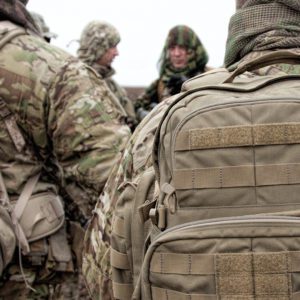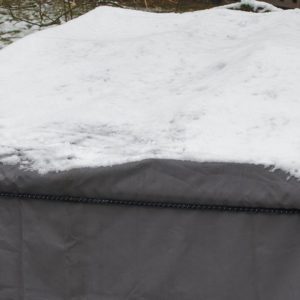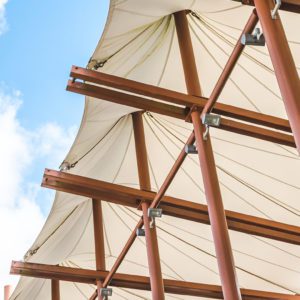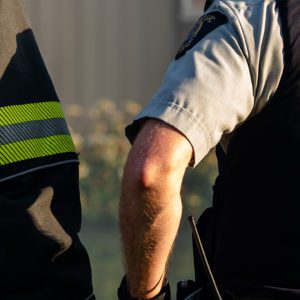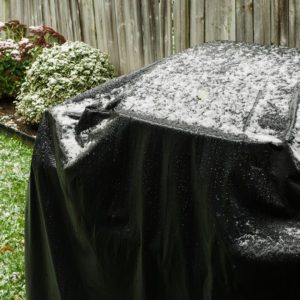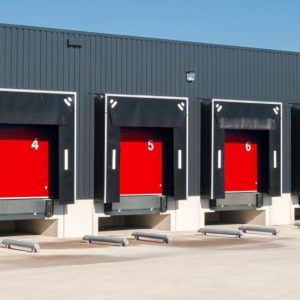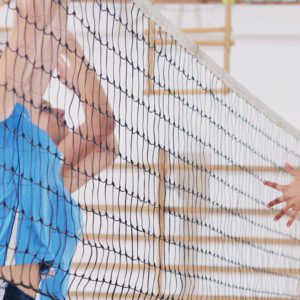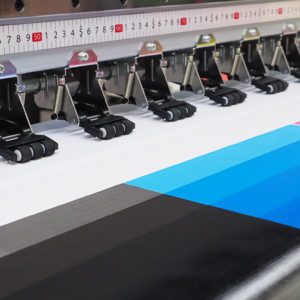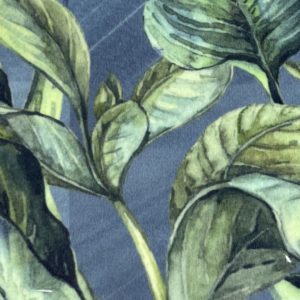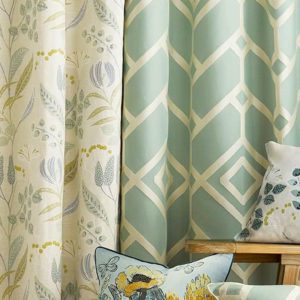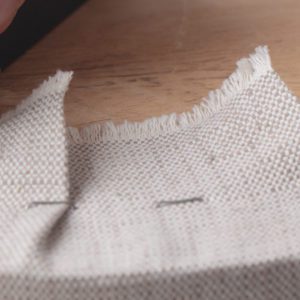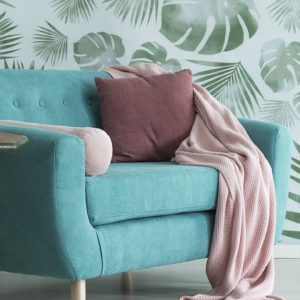Vinyl welding is one of the most reliable ways to create strong, sealed seams with no stitching or glue involved. It’s the go-to method when you need durability and water resistance that lasts.
Why Weld Vinyl?
PVC-coated fabric is one of the most commonly welded textiles in industrial applications. Welding is used when a strong, sealed seam is critical to how the product performs and holds up over time. Unlike stitching or adhesives, welding fuses the material itself, so the seam becomes part of the fabric. The result is a cleaner, stronger, and more reliable finish. The top three benefits of vinyl welding are:
- Vinyl welding creates a bond at the molecular level. Using controlled heat—whether from hot air, a hot wedge, or radio frequency—and applied pressure, the vinyl surfaces are fused together into a single, watertight seam that’s as strong as the original material.
- No punctures means material is intact. That means fewer weak points where water or contaminants could get in, and less risk of tearing under stress.
- Welded seams are tough. They resist weather, abrasion, chemicals, and repeated flexing, which helps extend the life of the product—especially in applications where reliability matters.
What are the Main Vinyl Welding Methods
There are many types of welding methods, but below are a few of the most popular, along with a comparison of non-welding solutions.
- Hot Wedge Welding
A heated metal wedge is inserted between two fabric layers. As the vinyl melts, pressure is applied to fuse the seam. Hot wedge welding is ideal where precise, leak-proof seams are needed.
Why use How Wedge Welding: Offers precise heat control and is ideal for long, straight seams and thick or multi-layer materials.
Applications for Hot Wedge Welding: Tarps, liners, awnings, tent panels, swimming pool liners, landfill covers, and more.
Hot Air Welding
A stream of hot air softens the vinyl between the layers. Pressure is then applied as the materials cool and bond. Hot air welding stands out for its speed and versatility with long, continuous panel joints in vinyl fabrics.
- Why use it hot air welding: More flexible and easier to maneuver around curves, corners, or complex shapes. Works well for interior seams where appearance matters.
Best for: Inflatables, packaging, signs, tents, industrial curtain walls, and more.
Radio Frequency (RF) Welding
High-frequency energy causes the vinyl molecules to heat internally and bond under pressure. RF welding is best for creating hermetically sealed, strong, and flexible seams in polar thermoplastics such as PVC and polyurethane
- Why use it RF welding: Produces uniform, high-strength seams across complex shapes or thick materials. Excellent for large production runs.
Applications for RF welding: Water tanks, billboards, oil booms, tent peaks, and high-performance products.
Top Three Alternatives to Vinyl Welding
Sewing
- Used for fabric-like vinyl
- Can compromise water resistance unless seams are sealed after stitching
- Common in prototypes or soft-sided products
Adhesives or Seam Tapes
- Easy to apply, no heat required
- May lose strength over time or in high-temperature environments
- More suitable for temporary or low-stress applications
Mechanical Fasteners
- Includes grommets, snaps, or rivets
- Useful for parts that need to open/close or adjust
- Can introduce stress points and aren’t ideal for sealed seams
